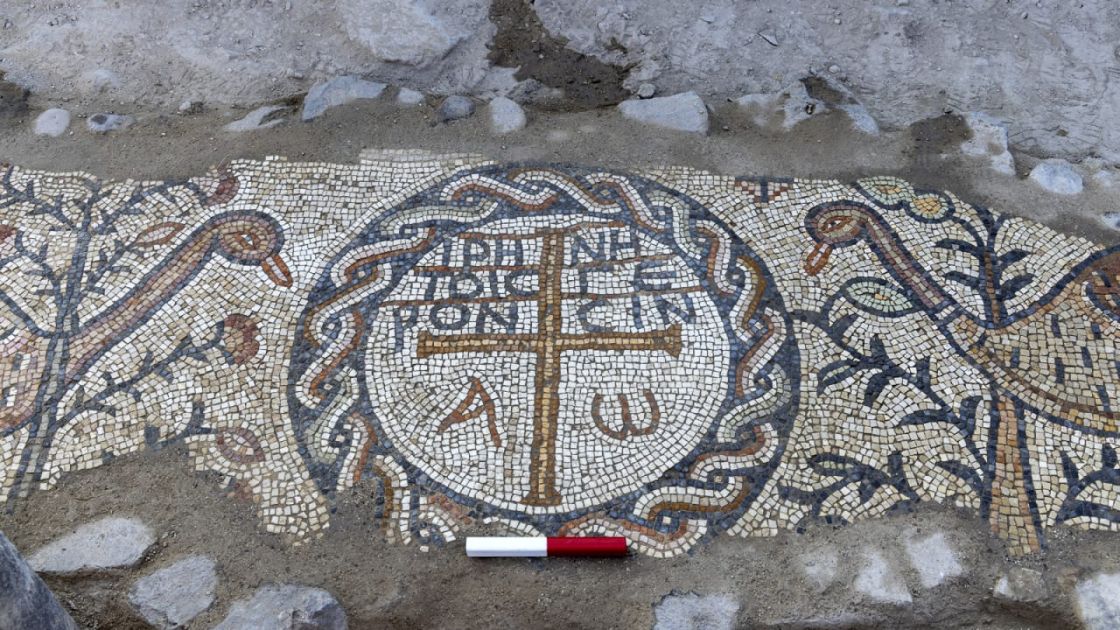Archaeologists from the University of Haifa have uncovered a 1,600-year-old mosaic in Sussita (Hippo) National Park near Galilee, shedding new light on social life during the Byzantine era, Azernews reports.
The mosaic bears the Greek inscription “Comfort for the Elderly,” pointing to the existence of a dedicated institution for the care of the elderly. The find, dating back to the late 4th or early 5th century AD, was discovered at the entrance to a public building in the city, which was the region’s main Christian center at the time.
Michael Eisenberg, director of the excavation project, described the discovery as “living proof that care for the elderly was already part of social institutions and concepts 1,600 years ago.” The findings were published in the academic journal Zeitschrift für Papyrologie und Epigraphik.
The mosaic was located within an ornate medallion near the intersection of the city’s two main streets, Decumanus Maximus and Cardo. Researchers from the University of Haifa and Professor Gregor Staab of the University of Cologne analyzed the inscriptions and compared them with historical references to elderly institutions mentioned in Byzantine records.
Its prominent placement at the building’s entrance indicates that the message was meant to be highly visible. Decorative motifs surrounding the inscription, including Egyptian water lilies, cypress trees, fruits, and bowls, further suggest that the structure had a spiritual and communal function.
While written sources from the 5th and 6th centuries describe such facilities, this is the first physical evidence directly linking them to a specific institution. The explicit reference to “Comfort for the Elders” reflects an early form of organized community care and respect for older citizens in Byzantine society.
Researchers concluded that the institution served both community and spiritual purposes, illustrating how responsibility for the elderly extended beyond families to the wider public. The discovery provides rare insight into how Christian cities of the time combined religious devotion with social responsibility.

